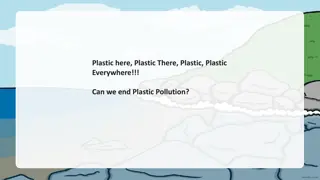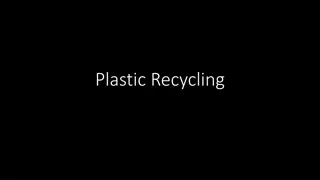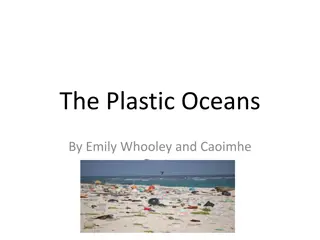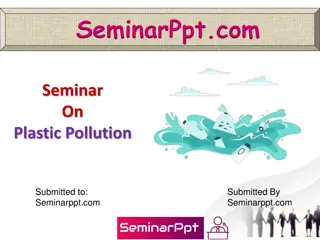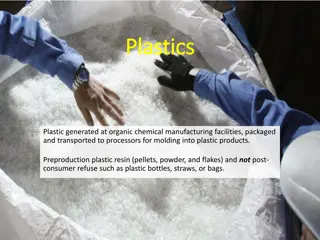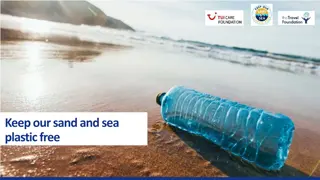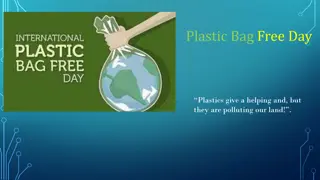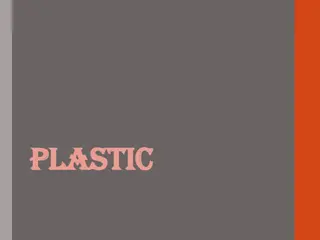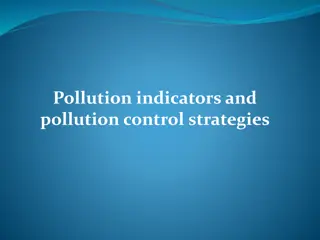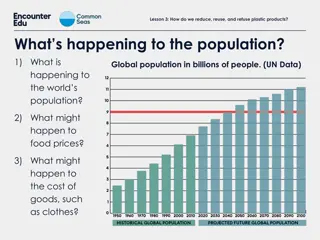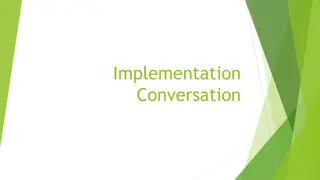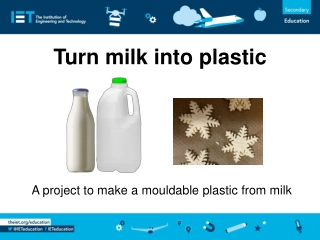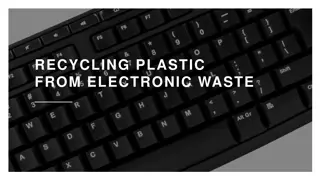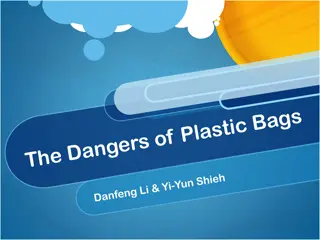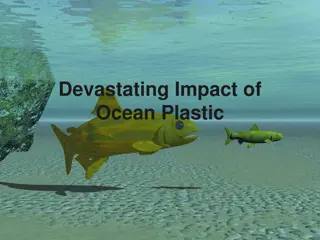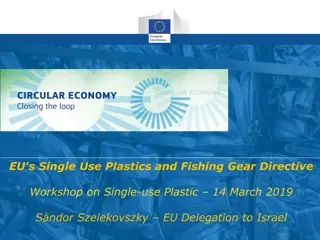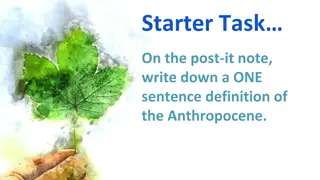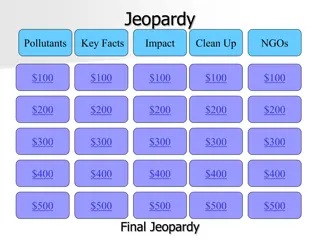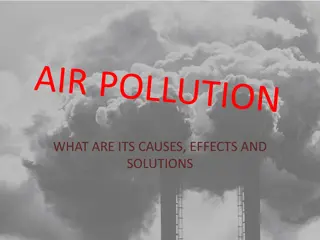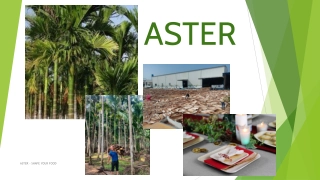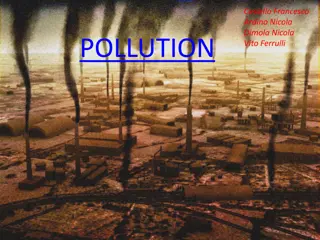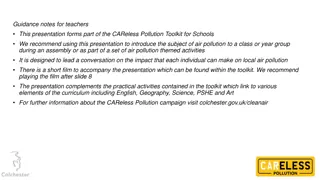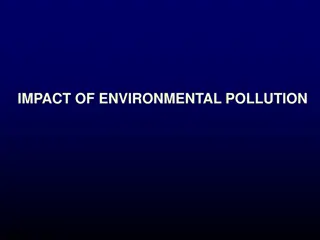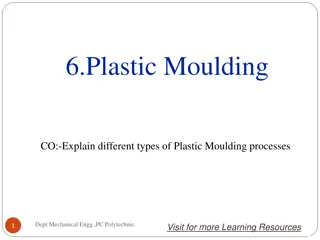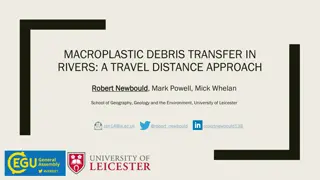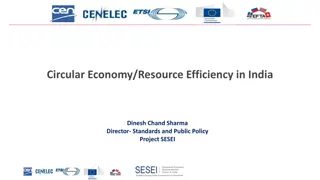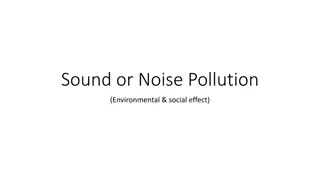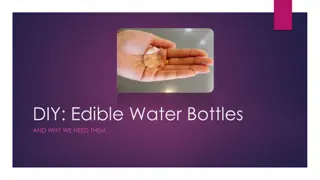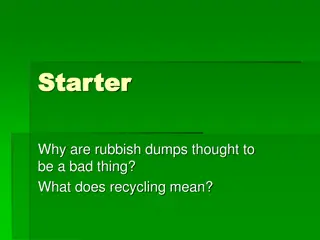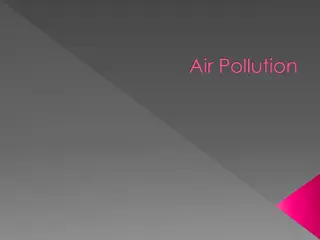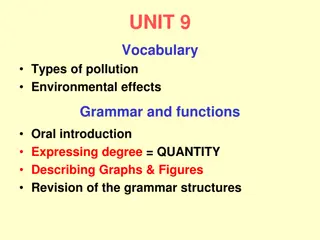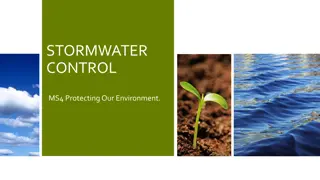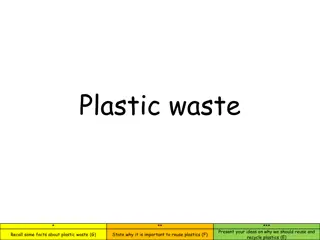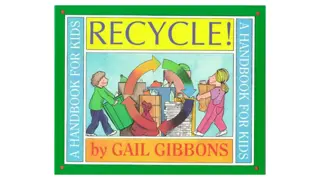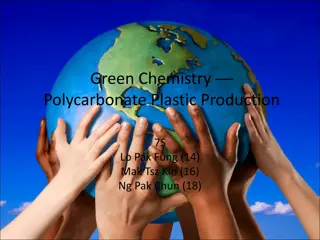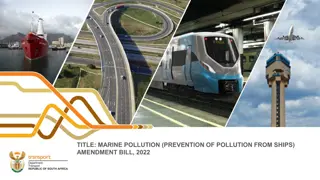Solutions to Plastic Pollution: Taking Action for a Sustainable Future
The KazakhExport EIC JSC is committed to sustainable development by addressing plastic pollution through global initiatives. Plastic waste poses a threat to ecosystems and human health due to its long decomposition period. Implementing regulations at the production level and promoting ecodesign can help mitigate the impact of plastic pollution on the environment.
Download Presentation

Please find below an Image/Link to download the presentation.
The content on the website is provided AS IS for your information and personal use only. It may not be sold, licensed, or shared on other websites without obtaining consent from the author. Download presentation by click this link. If you encounter any issues during the download, it is possible that the publisher has removed the file from their server.
E N D
Presentation Transcript
Solutions to the problem of plastic pollution The KazakhExport EIC JSC joined the UN Global Compact in 2017, which is one of the leading global initiatives in the field of sustainable development. In its activities in the field of sustainable development management, the Company is guided by the principles based on international practice: - 17 United Nations (UN) Sustainable Development Goals; - 10 Principles of the UN Global Compact (human rights, labor relations, environmental protection and anti-corruption). To date, topical issues are the problems of climate change, the consequences of a negative impact on the environment and much more. 1
Solutions to the problem of plastic pollution Over the past 70 years, the production of plastics worldwide has increased 215 times - from 1.5 million tons in 1950 to 322 million tons in 2015, and in 2017 production volumes already exceeded 400 million tons. Plastic waste produced by enterprises and the population is a global problem that threatens the health of people and the entire ecosystem of the Earth. At the same time, plastics decompose in the environment for a very long time. For different types of plastic, these periods range from 100 to 500 years. Plastic breaks down into small particles - microplastics, which cannot be completely recycled by the ecosystem, like paper or wood. This microplastic penetrates the soil, as well as water bodies, and thus ends up in the stomachs of animals and fish. The UN estimates that every year 1 million seabirds, 100,000 marine mammals and turtles, and countless fish die from microplastic ingestion. Harm to the ecosystem can be avoided if non-naturally degradable waste is not allowed to the environment. For this, the production cycle must be ome closed. Thus, many companies around the world began to move from linear supply chains to closed supply chains, in which return flow management or reverse (return) logistics appeared. Therefore, the task of organizing work with plastic waste is quite relevant in scientific and practical terms. Microplastics have become one of the main problems of recent times. Modern environmental cleanup strategies are trying to mitigate the negative effects of this process, but are unable to withstand the growing amount of plastic. 2
Regulation of production At the production level, the use of plastics can be reduced in the following ways: - - use alternative, recycled or biodegradable materials; improve product designs to reduce the amount of plastic, increase product life, repair and reuse; increase the processability of materials by limiting the amount of polymers, additives and mixtures; prohibit certain types of single-use plastic, evaluate the life cycle of the product and packaging - this helps to identify ways to improve the environmental parameters of products at different stages of its use. - - - 3
Ecodesign Creation of ecological design includes the following: - packaging of goods with the possibility of its reuse and processing; - the use of less energy-intensive materials; - development of effective configurations for convenient delivery, that is, you need to come up with a form of the product that will allow you to transport as many units of goods as possible in one transportation. Although implementation of ecodesign may require more energy or reduce the life of the product. Such factors also need to be taken into account and a compromise must be found. 4
Reduce plastic consumption Reducing the consumption of plastics is beneficial but sometimes difficult to achieve due to unsafe food storage and lack of convenience. However, it is possible to avoid unnecessary packaging (e.g. double packaging) or choose sustainable alternatives. Growing demand for plastic-free products will in turn force companies to redesign their products. 5
Increase public awareness Increasing consumer awareness of the impact of their choices on the environment is a long-term strategy. It can be achieved through formal education: in schools, universities, or informal education - news, environmental issues supported by free online courses, lectures and events, and thematic mobile applications. videos. is Interest in is growing and In search engines and social networks, the statistics of requests "microplastic" is growing. In the media, the number of materials on this topic has increased. However, reducing plastic consumption depends primarily on the availability of plastic-free alternatives. for the keyword 6
Extended producer responsibility for waste Companies must strive to reduce waste and be held accountable for the waste generated by their products under Extended Producer Responsibility. It consists in compliance with recycling standards, signing contracts with processors and paying an environmental fee. It is recommended to stimulate producer responsibility with subsidies to processors and companies that use recycled materials and by awarding bonuses. 7
Improvement of the waste collection and disposal system Waste management is based on the 4R concept: refuse, reduce, reuse, recycle. While reduction and reuse is a priority, this is difficult to achieve with packaging. It requires restoration, sorting and refilling. This is unacceptable for the food industry, but such material can be used for packaging non-food products. Thus, waste should be recycled and reused as a raw material or for energy production. Only final waste, such as ash, needs to be landfilled. To control these processes, it is necessary to develop an integrated waste management system. 8
Waste treatment Plastic recycling is a complex process that includes the following steps: - waste collection by consumers; - separation of recyclable materials and removal of pollutants; - sorting by polymer and color; - obtaining granules from each polymer and color; - sale of pellets to manufacturing companies. Recycling uncontaminated materials gives high quality plastics. At the same time, when processing contaminated waste, low-quality plastic is obtained, it can be used in building materials, textiles. Ideally, recycled plastics should be used for a long time. They can be included in asphalt, concrete to improve their properties. Recycling plastics is usually not economically viable, the scientists say, but it can lead to kickbacks in circular businesses. Manufacturers need supplies of standard quality raw materials, which are sometimes difficult to achieve in processing. This problem can be solved by increasing the recycling rate and the quality of the resulting materials. 9
E-waste recycling E-waste contains a mixture of materials. Recycling of e-waste begins with the disassembly of devices and the separation of metals from plastics, then the components are sorted. Recycling of plastics is complicated by pollutants: paint, brominated elements. Replacing plastic with biodegradable materials, redesigning electronics to reduce the amount of polymers will reduce the environmental impact of e-waste. Few e-waste plastics are now recyclable, but most of them can be used to generate energy. 1 0
Conclusions and recommendations Short term measures: Regulation of plastic production by bans or taxes on plastic products that are harmful to the environment. Reduce plastic consumption by removing unnecessary packaging, labeling, raising awareness and providing environmentally friendly alternatives. Increasing demand for recycled plastics through incentives or taxes on virgin plastics. Medium-term measures: Implementation of waste collection systems that will lead to their reduction. Converting waste into energy. Reduction and recycling of waste generated during the production process. Long term measures: The use of renewable energy in the collection and processing of waste. Implementation of a life cycle assessment of each product to improve ecodesign. Use of biodegradable plastic in cases where composting is beneficial. Improving the recycling of e-waste. Since plastic marine litter knows no borders, international cooperation is required to improve waste management systems in all countries, or at least coastal ones. As the concentration of plastic in the oceans stabilizes, it can be removed from the environment, sending it for recycling. 1 1


